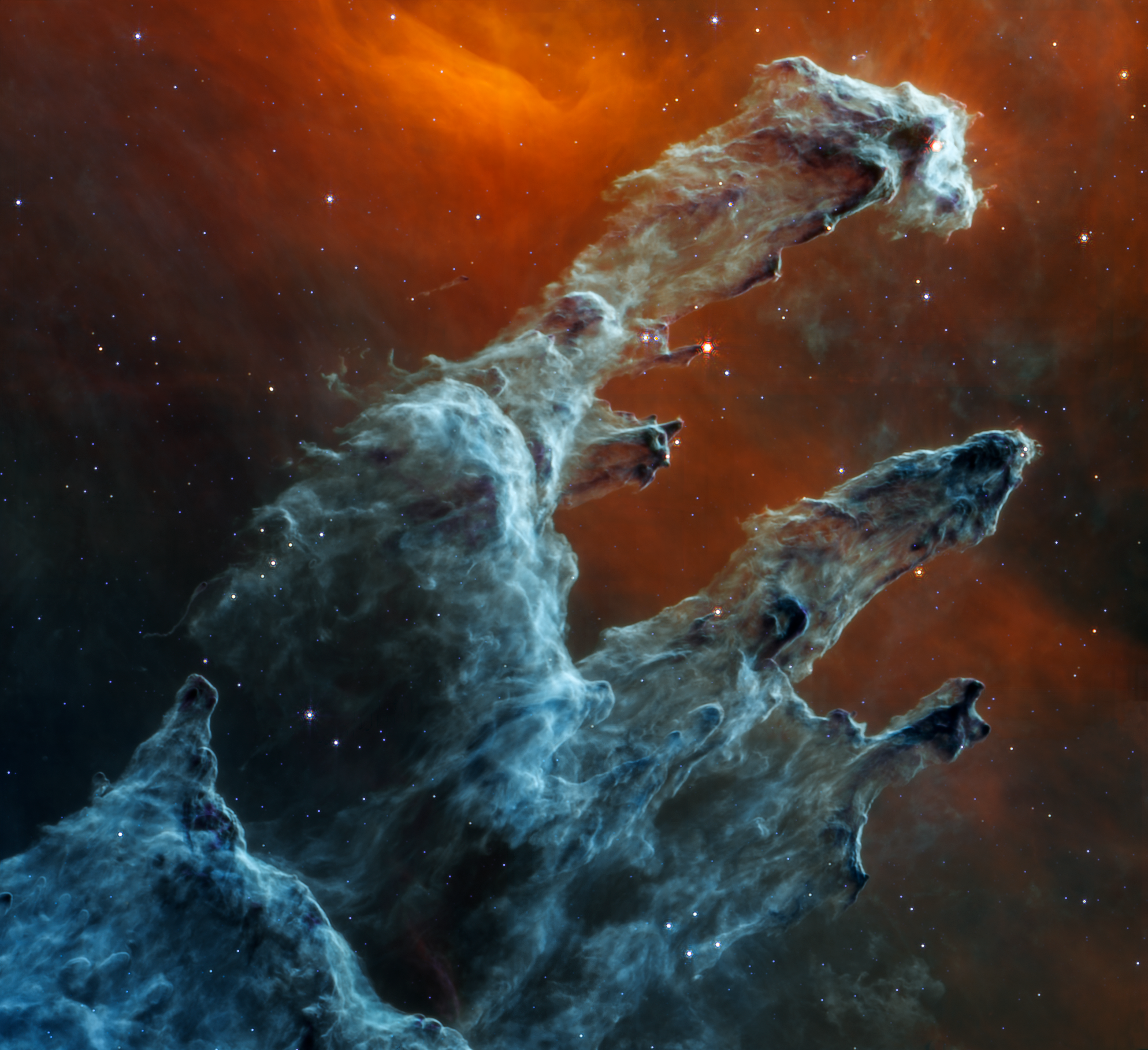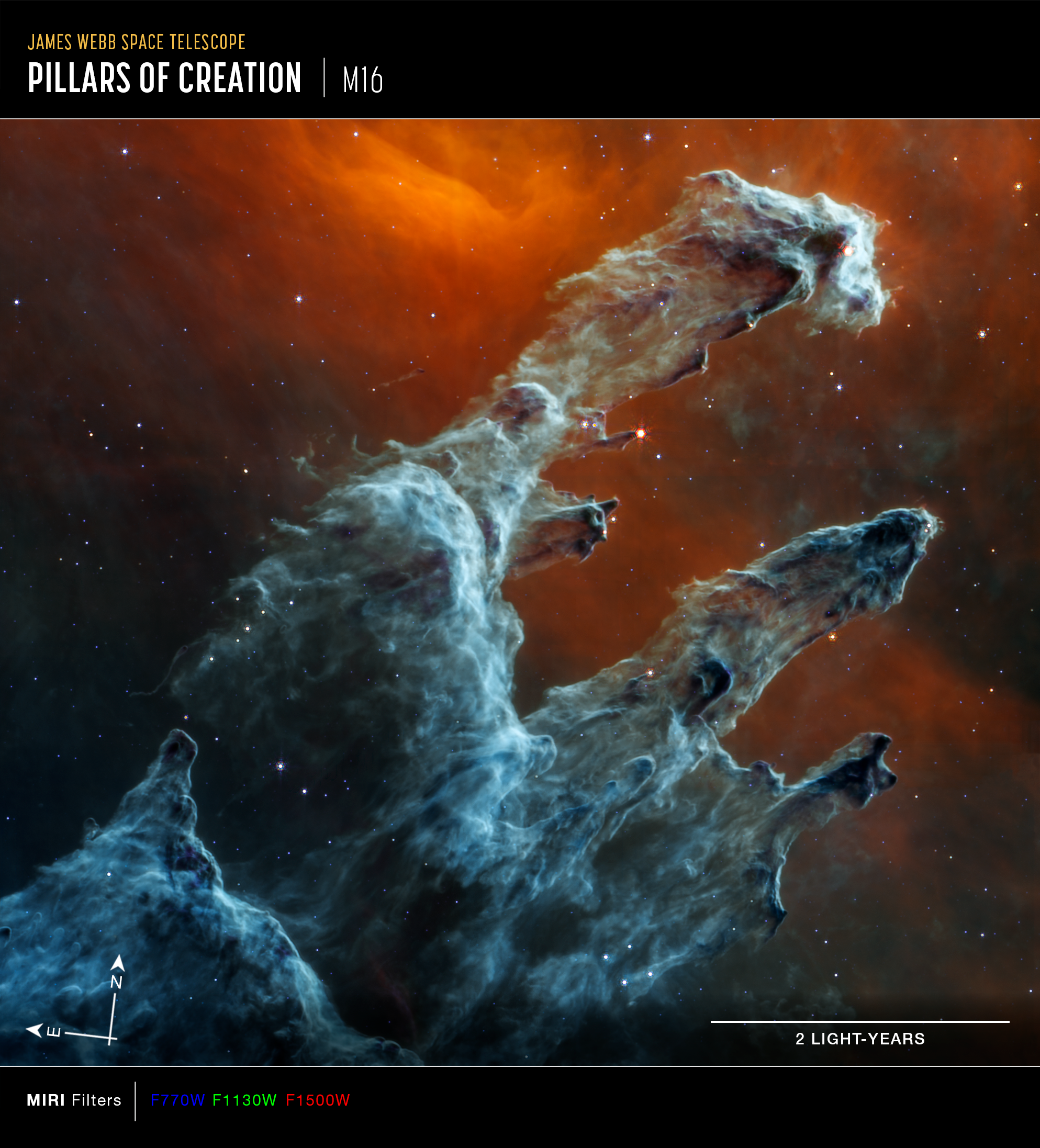1 min read
The Pillars of Creation in Mid-Infrared Light
Compare NASA’s James Webb Space Telescope mid-infrared light image of the Pillars of Creation to its near-infrared light image in this short video tour. Thousands of stars have formed in this region, but interstellar dust cloaks the scene in mid-infrared light, which is why the majority of the stars appear to be missing. A quick dissolve to the near-infrared image proves they are still there, of course.
While mid-infrared light specializes in detailing where dust is – and these pillars are flush with dust and gas – many stars in this region aren’t dusty enough to appear at these wavelengths.
Instead, mid-infrared light reveals which of the young stars still have their dusty “cloaks.” These are the crimson orbs toward the fringes of the pillars. In contrast, the blue stars that dot the scene are aging, which means they have already shed most of their layers of gas and dust.
How vast is this landscape? This bright red star and its dusty shroud are larger than the size of our entire solar system.
Read more about Webb's mid-infrared image of the Pillars of Creation.
- Release DateOctober 28, 2022
- Science ReleaseHaunting Portrait: NASA’s Webb Reveals Dust, Structure in Pillars of Creation
- CreditVideo: Danielle Kirshenblat (STScI); Designer: Leah Hustak (STScI); Music: Soundstripe Productions; Science: NASA, ESA, CSA, STScI; Image Processing: Joseph DePasquale (STScI), Alyssa Pagan (STScI)
Downloads
Related Images & Videos

Pillars of Creation (MIRI Image)
NASA’s James Webb Space Telescope’s mid-infrared view of the Pillars of Creation strikes a chilling tone. Thousands of stars that exist in this region disappear – and seemingly endless layers of gas and dust become the centerpiece. The detection of dust by Webb’s Mid-Infrared...

Pillars of Creation (MIRI Compass Image)
This image of the Pillars of Creation, captured by Webb’s Mid-Infrared Instrument (MIRI), shows compass arrows, scale bar, and color key for reference. It lies within the Eagle Nebula, which is also known as Messier 16 (M16). The north and east compass arrows show the...
Share
Details
Laura Betz
NASA’s Goddard Space Flight Center
Greenbelt, Maryland
laura.e.betz@nasa.gov
Danielle Kirshenblat (STScI)
Leah Hustak (STScI)
Soundstripe Productions
NASA, ESA, CSA, STScI
Joseph DePasquale (STScI), Alyssa Pagan (STScI)































